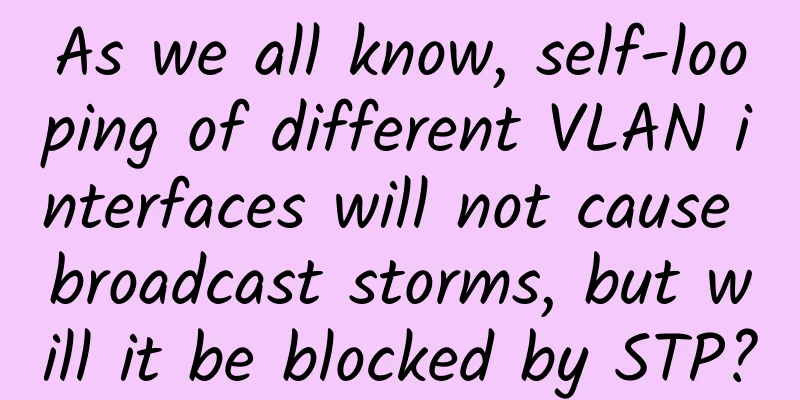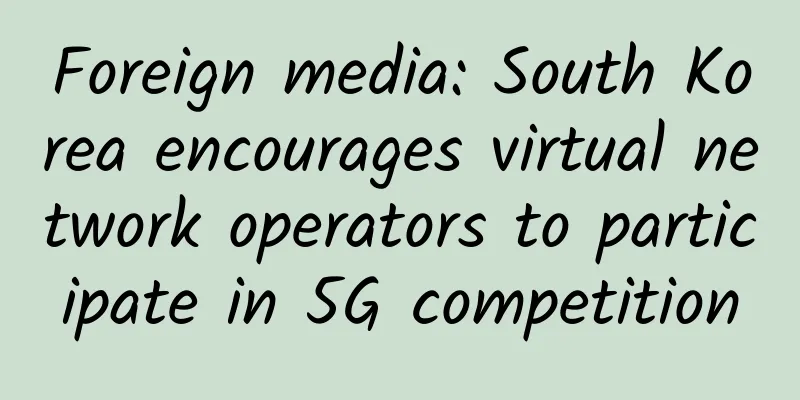As we all know, self-looping of different VLAN interfaces will not cause broadcast storms, but will it be blocked by STP?

|
Take a simple topology: In this topology, G0/0/1 and G0/0/2 of SW1 belong to different VLAN1 and VLAN2 respectively. Both ports are connected to the fool switch at the same time, which is equivalent to a "physical self-loop", but in fact there is no logical loop. This kind of self-loop network will not generate a broadcast storm, as shown in the following figure: After the broadcast packet enters port 1, it will be marked with the default tag 1, that is, it will not be forwarded to port 2 of VLAN2, and no loop storm will occur. In this case, if the switch enables the STP function, will one of the two ports be blocked? Before explaining this problem, let's simulate it. Building the topologyIn this example, the topology is simulated by eNSP. The switch enables STP mode, port 1 is configured as Access VLAN1, and port 2 is configured as Access VLAN2. Wait for the topology to converge and check the final status of the spanning tree convergence: It can be seen that port 2 is blocked in the end. The STP priority is "slightly better". Port 1 has a higher priority, so blocking port 2 is in line with expectations. But obviously, the STP protocol does not care whether ports 1 and 2 belong to different VLANs. Even if there is no loop in the logical topology, the protocol will block it. This result does not meet the psychological expectations of the general users and is considered "false blocking". Why is this the case? Principle AnalysisThe basis for STP protocol convergence is the interaction of BPDU messages. After the switch port enables STP, BPDU is sent out by the port, and the BPDU sent out by each port is different. BPDU messages are encapsulated in 802.3/LLC frame format, which is slightly different from the common Ethernet datagram 802.3 Ethernet 2 frame format: The BPDU of STP and RSTP does not contain VLAN information, so the spanning tree protocol does not make judgments and comparisons based on port VLANs. So how does it perform in MSTP? Convergence of different VLAN interfaces in MSTPMSTP can configure VLAN convergence in different instances in two situations: 1. Default Configuration By default, VLAN 1 and VLAN 2 are both MSTP instance 0. If both ports converge in the default instance 0, the port with the lowest priority will be blocked: 2. Configure the instanceIf VLAN1 and VLAN2 are assigned to different instances 1 and 2 respectively, the instances are converged and calculated independently, and the physical ports 1 and 2 are not blocked. The forwarding mechanism is as follows:
After the MSTP instance is configured, the BDPU message contains the MSTID field, and the interaction calculation between switches and bridges will converge based on the instance: SummarizeIt doesn’t matter if you don’t understand the above principles, just think about it slowly, but be sure to remember the following summary: Q: If STP or RSTP is enabled on a switch and different VLAN interfaces "loop" each other, will one of the interfaces be blocked? A: Yes, the port with the lower priority will be blocked. Q: What if MSTP is enabled? A: There are two situations:
|
>>: F5 redefines ADC in the AI era
Recommend
Why has the Bluetooth technology, which was almost forgotten, remained strong until now?
If you have used the earliest generations of smar...
In response to the five major trends of application modernization in the financial industry, consistent delivery experience is the key
With the rapid development of digital technology,...
Architecture design of MQTT messaging platform for 10 million-level Internet of Vehicles
Preface With the advancement of the new four tren...
Direction determines success or failure: a review of the 5G development plans of the four major operators
It has been three years since my country issued 5...
RAKsmart: US dedicated servers start from $30/month, Japan/Korea servers start from $59/month, cluster servers start from $109/month
This month, we have shared the discount code info...
Evolution of network automation to network intelligence
In the process of industrial digitalization, Inte...
Do you feel that 4G is slowing down? Too many users is the main reason and it has nothing to do with 5G promotion
After operators launched the "unlimited data...
How will future 6G networks cope with the demand for mobile data?
Ian Wong, director of RF and wireless architectur...
Comparison of LPWAN technologies: Ten criteria for successful implementation
Low Power Wide Area Network (LPWAN) is the fastes...
Seamless mobile connectivity is key to digitalization in healthcare
[[373455]] The widespread problem of unreliable c...
The biggest risk of 5G networks
The fifth generation (5G) network has the potenti...
What traditional financial services can learn from emerging banks and fintech companies
The pandemic has exposed gaps in nearly every ind...
QuChain Technology settles in Huawei Cloud and will jointly build integrated blockchain services
On September 6, during HUAWEI CONNECT 2017, Huawe...
Accelerate the construction of new infrastructure projects such as 5G and integrated data centers
Since the beginning of this year, the COVID-19 pa...
[Black Friday] Anynode: $8/year KVM-512MB/10G SSD/1TB/Las Vegas
Anynode released a Black Friday discount plan, of...









